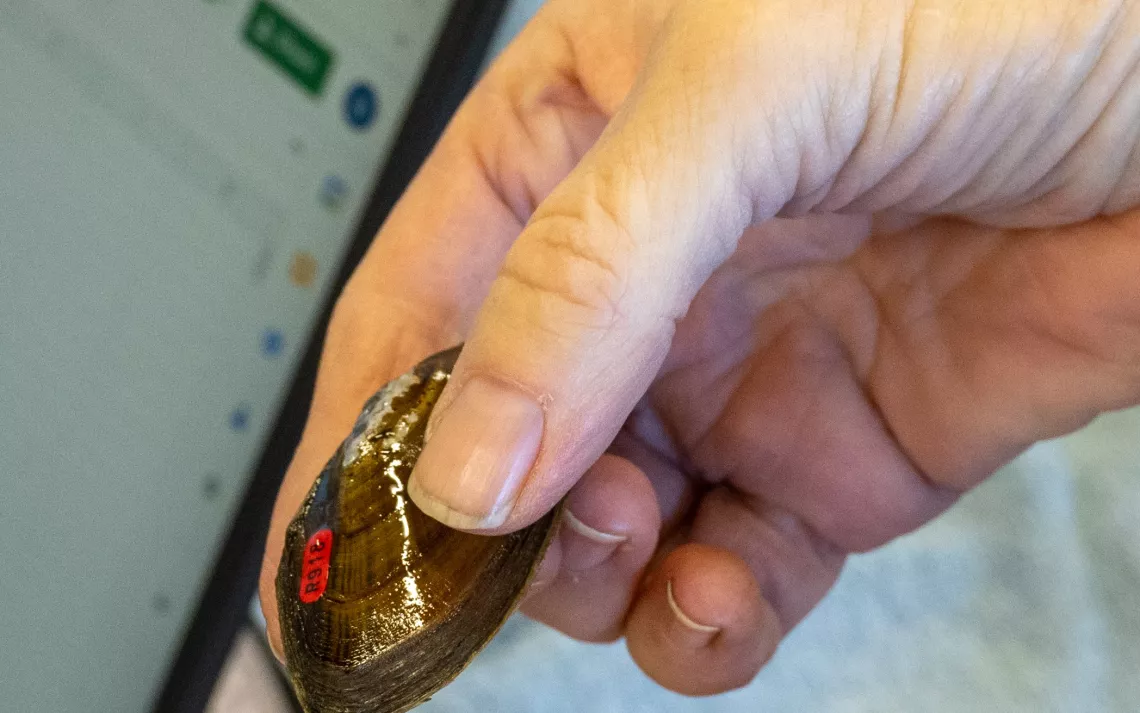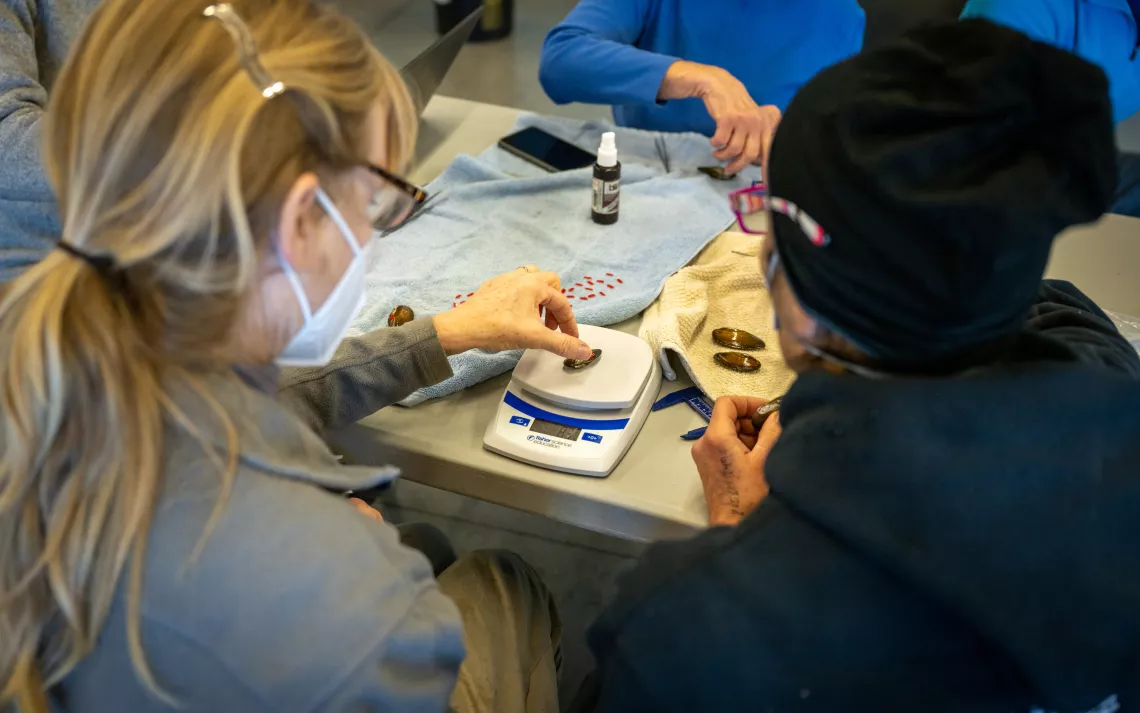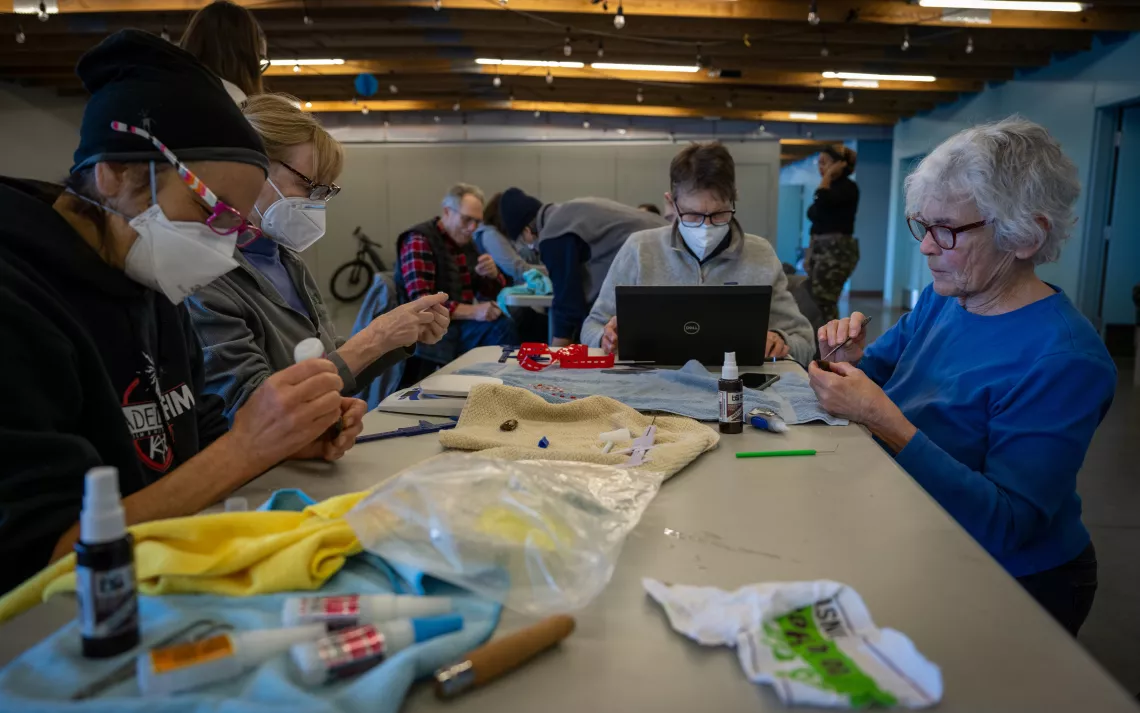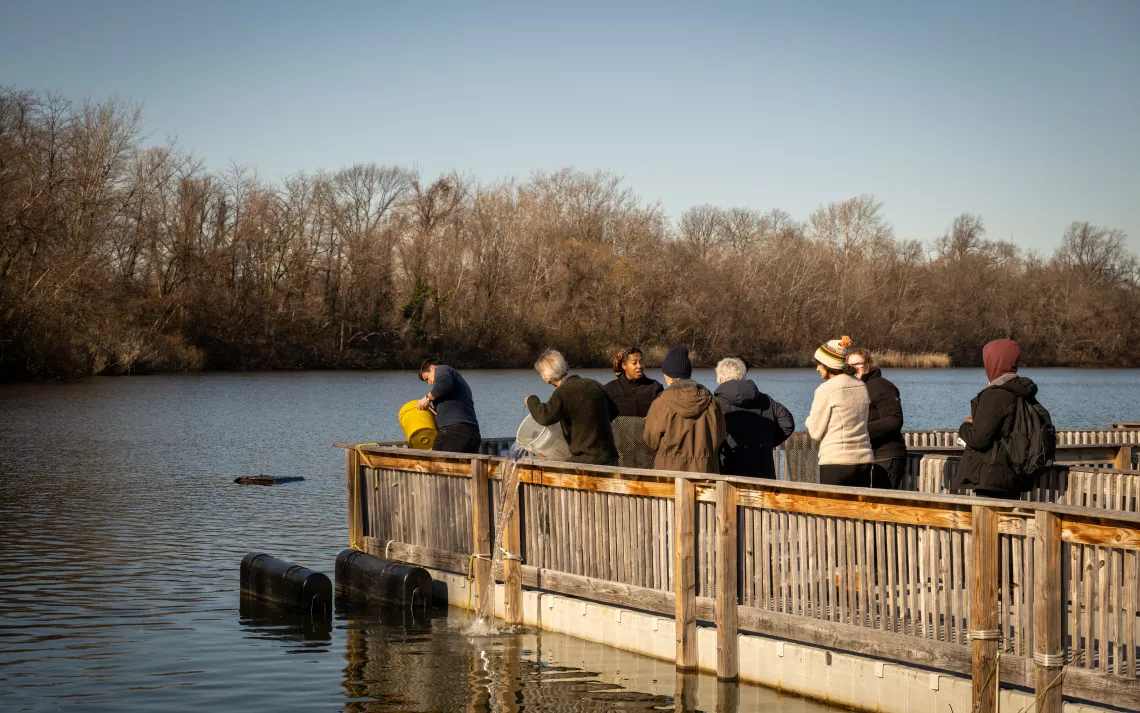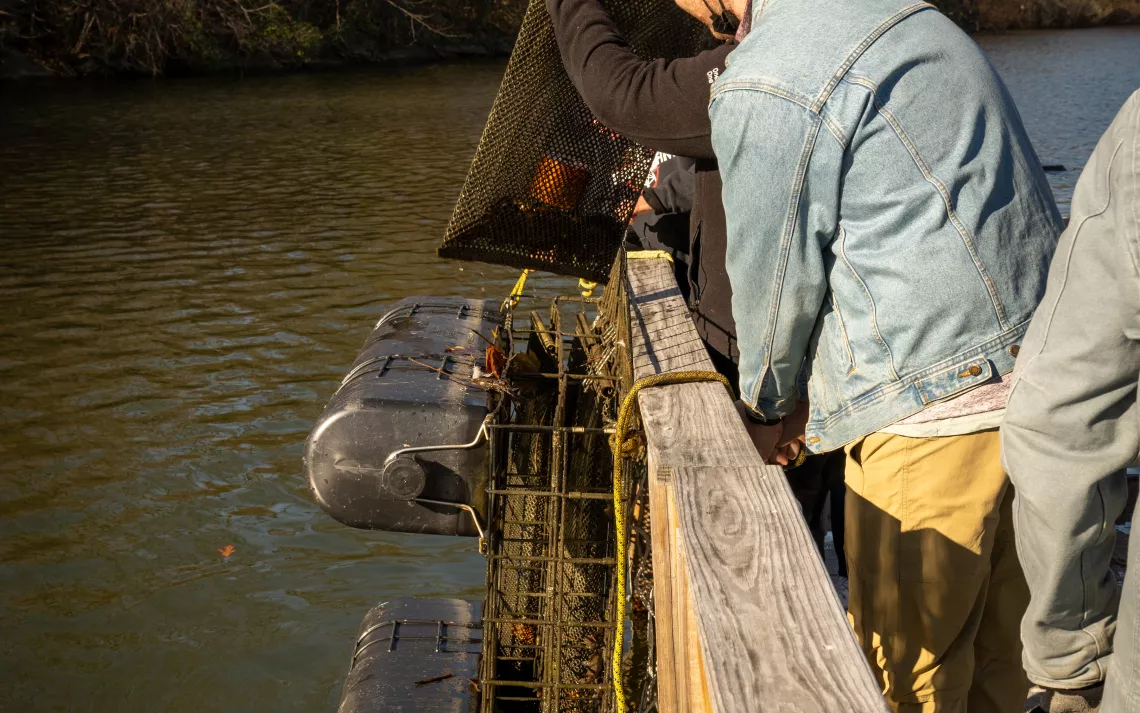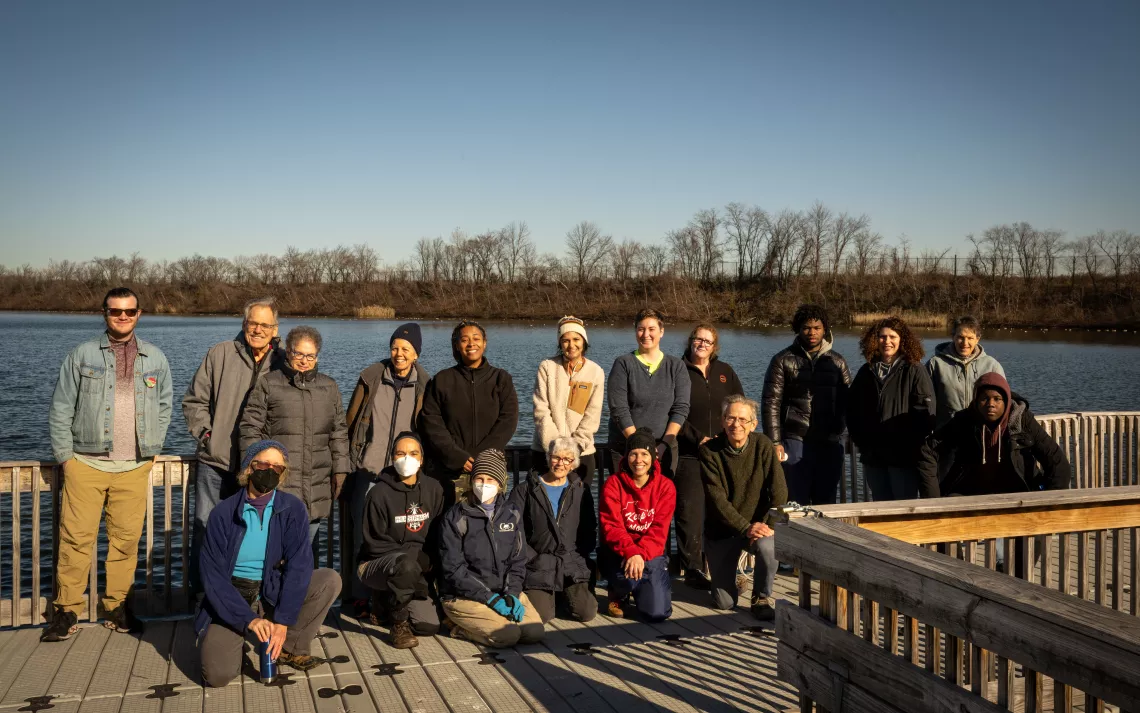By Emily Davis, Secretary/Treasurer, Southeastern Pennsylvania Group
Photos courtesy of Troy Bynum
On December 10th, five volunteers from Sierra Club of Southeastern Pennsylvania joined other volunteers to tag and measure mussels at the Discovery Center in Philadelphia’s Strawberry Mansion neighborhood. The old reservoir, now called Strawberry Mansion Reservoir, is a perfect place to raise baby mussels. The water in the lake comes from precipitation, which means it is cleaner than other local water bodies.
These mussels began their lives at the mussel hatchery at the Fairmount Water Works in the spring of 2019. The hatchery is a research, development and demonstration laboratory designed to determine the best species and best propagation practices in advance of a planned, large-scale production hatchery to be built at Bartram’s Garden. When released into the wild, they are two to three times that size. So far, 40,000 mussels have been propagated at the hatchery, 20,000 in this past year (2022) alone. As the study continues, the location where the mussels are placed in local streams is recorded along with the length and weight data entered for each mussel.
Freshwater mussels are bivalves in the Order Unionida and Family Unionidae. Mussels have an asymmetrical shell with a covering called periostracum. Freshwater mussels feed on phytoplankton and bacteria which they retrieve from the water by filter feeding. Their motion as adults is limited and they use a muscular “foot” to pull themselves down into the stream bed or adjust their orientation.
Historically, 12 species of mussels were common in the Delaware watershed. Now populations of all those species are depleted, several critically threatened. Mussels provide important ecosystem services such as cleaning the water in which they live and stabilizing stream beds. As filter feeders, they suck water in and trap solids such as dirt, algae and other pollutants. Then they release the clean filtered water back into the environment. One mussel bed studied in Southeast Pennsylvania was found to remove 26 metric tons of solids from the water in a single summer season. This is why the Philadelphia Water Department, Audubon Mid-Atlantic at the Discovery Center, the Partnership for the Delaware Estuary, the Academy of Natural Sciences of Drexel University and Bartram’s Garden are collaborating to raise mussels. This partnership called the Aquatic Research and Restoration Center (ARRC) promotes environmental awareness, scientific understanding and the conservation, and restoration and enhancement of key aquatic natural resources determined to be important for sustaining clean water. Once reestablished in our watershed, the mussels will clean our water and stabilize our streambeds. This will make it less expensive for the Water Department to clean the water we drink.
Part of the cause of the decrease in mussel population is their complex life history. Mussels need a fish to reproduce, and fish populations in our watershed have decreased. Here’s how it works: Female mussels suck in sperm released into the water by the male mussel. The fertilized eggs are held in pouches in her gills (marsupia) She broods the larvae until the right fish comes along. The microscopic larvae, called glochidia, are released into the water and attach to the gills of the fish. The glochidia remain attached to the gills until they metamorphose into juvenile mussels that look just like very tiny adults. Once in the stream bed, a mussel can live as long as 100 years.
In the past, the use of freshwater mussels for bait and their shells for buttons also contributed to the population decline. More recently, pollution and sedimentation have been major problems. Mussels are particularly sensitive to ammonia, a pollutant that comes from agriculture (and fracking) and sediments in the water. Both the sedimentation and ammonia pollution problems can be lessened by planting strong riparian buffers along streams, ponds and lakes. These buffers allow rainwater to sink into the soil, a natural filter. The sedimentation problem can also be lessened by decreasing the amount of impervious surface in the built environment so rainwater sinks into the ground rather than running off, sending sediments and pollutants into our rivers and streams.
This blog was included as part of the February 2023 Sylvanian newsletter. Please click here to check out more articles from this edition!
